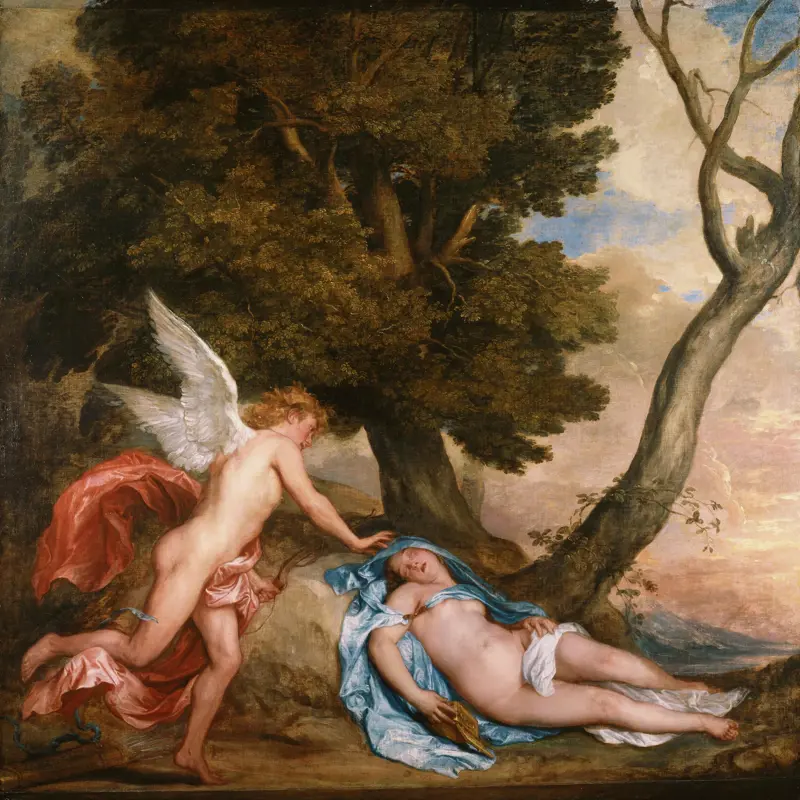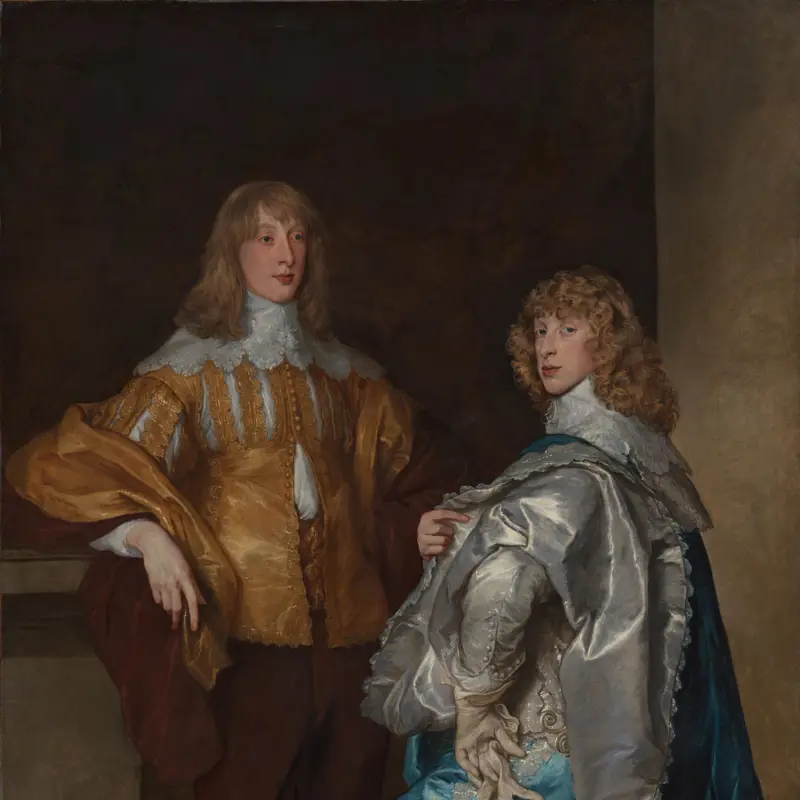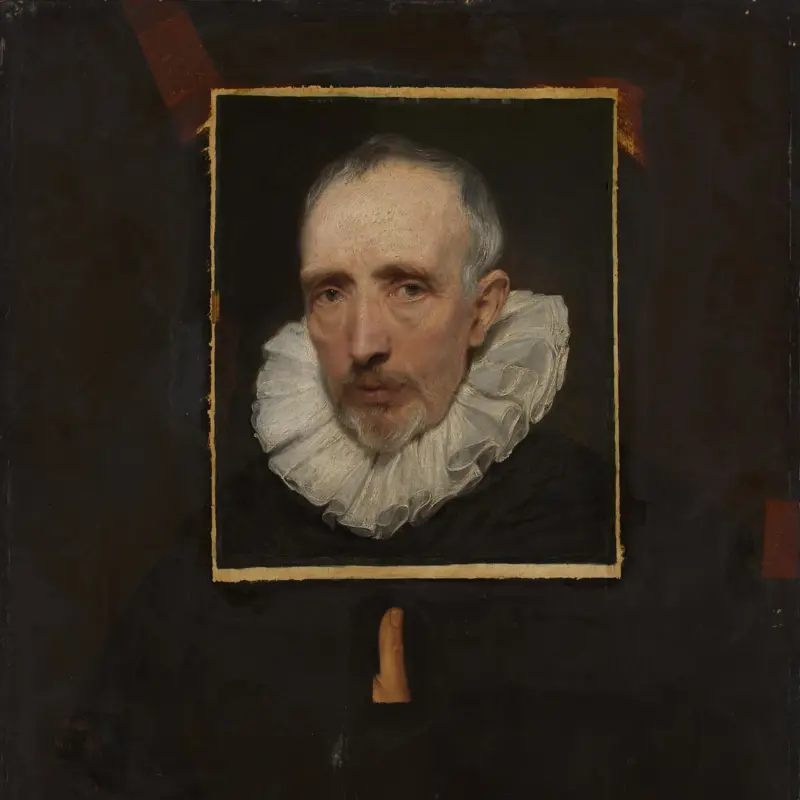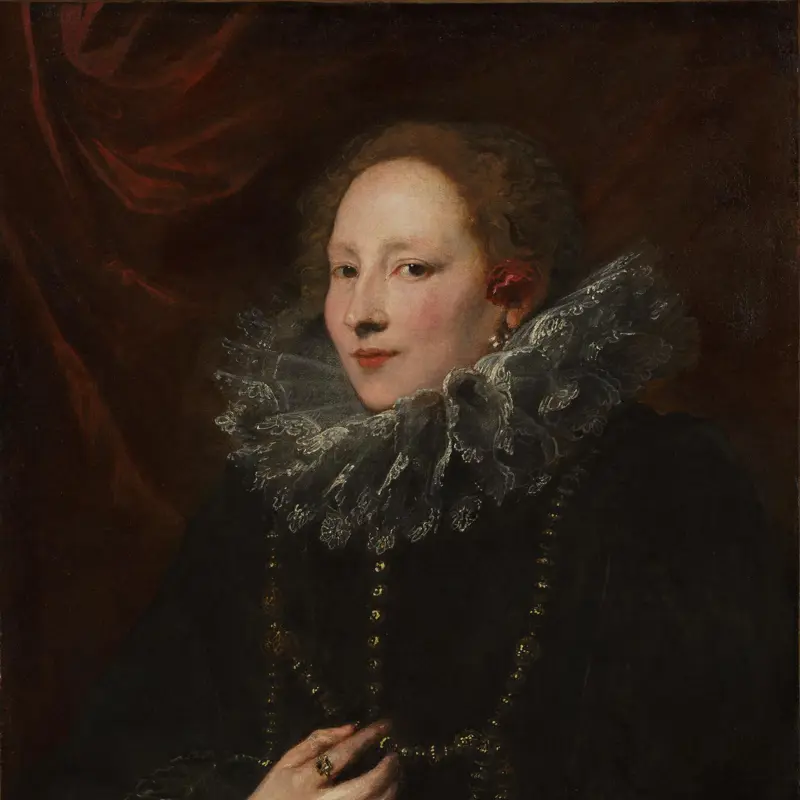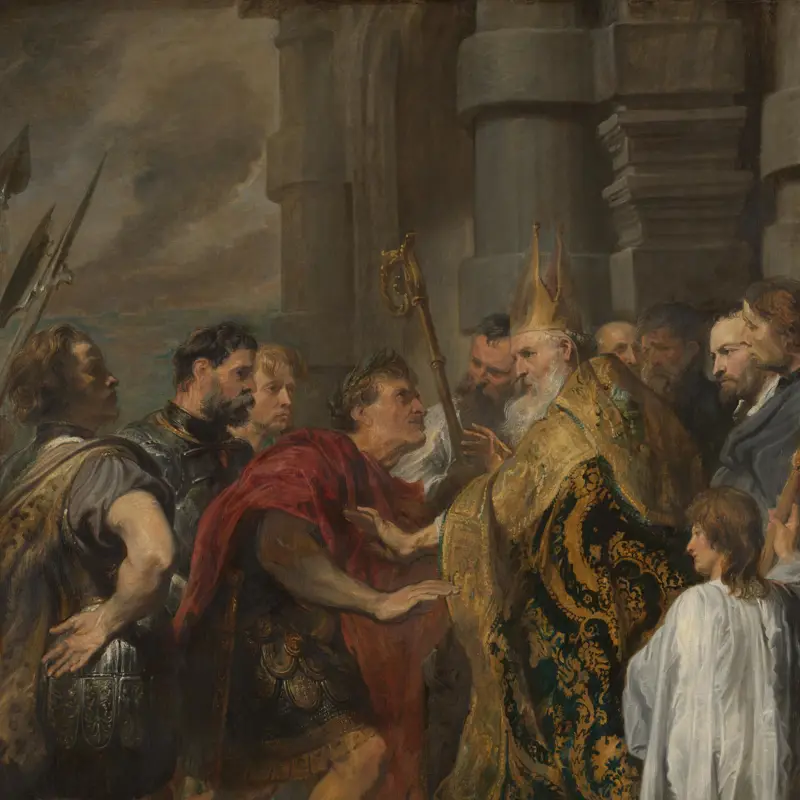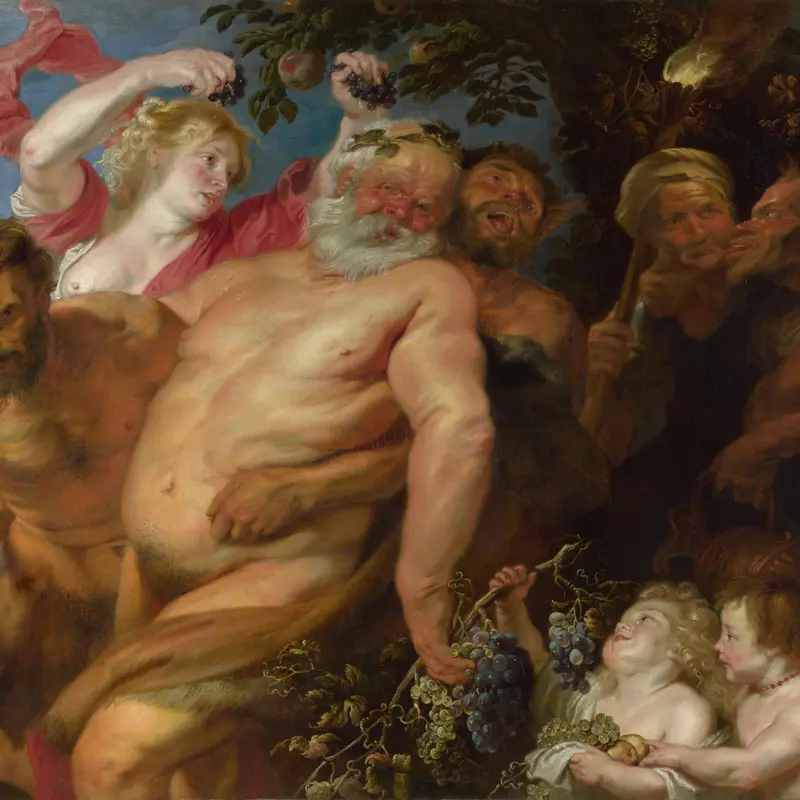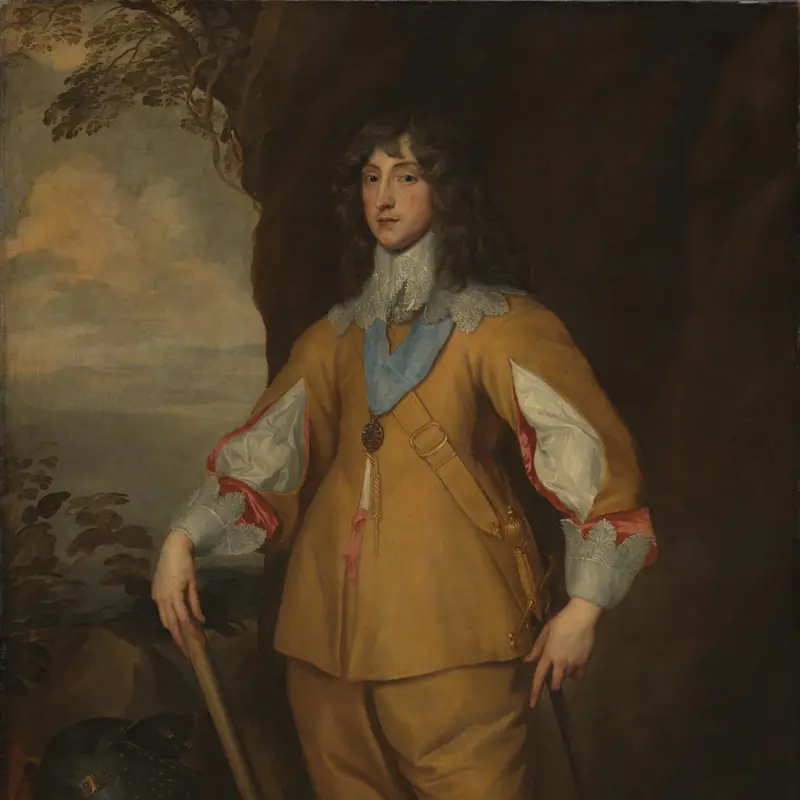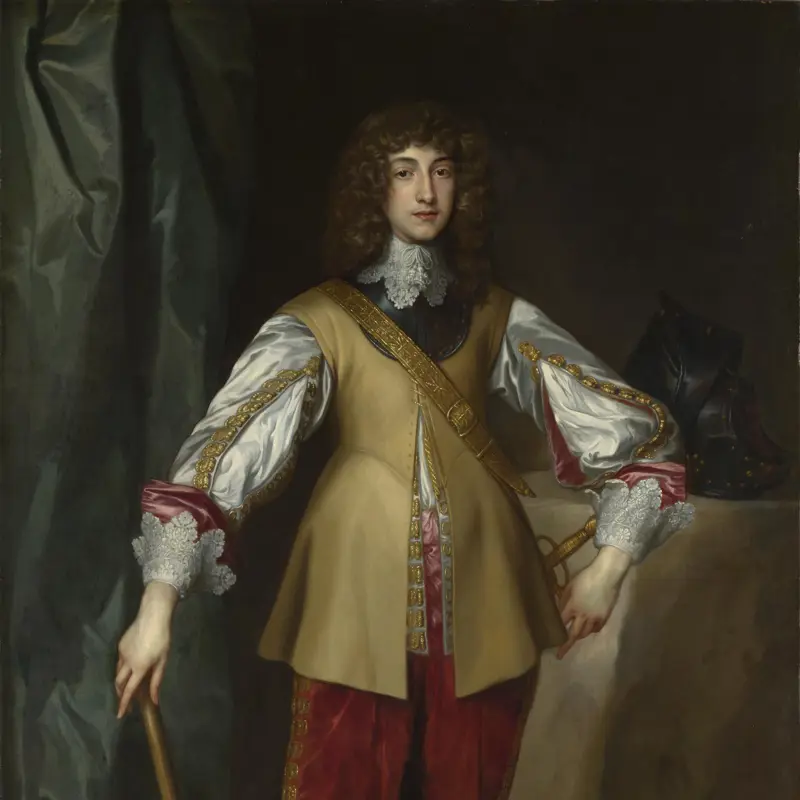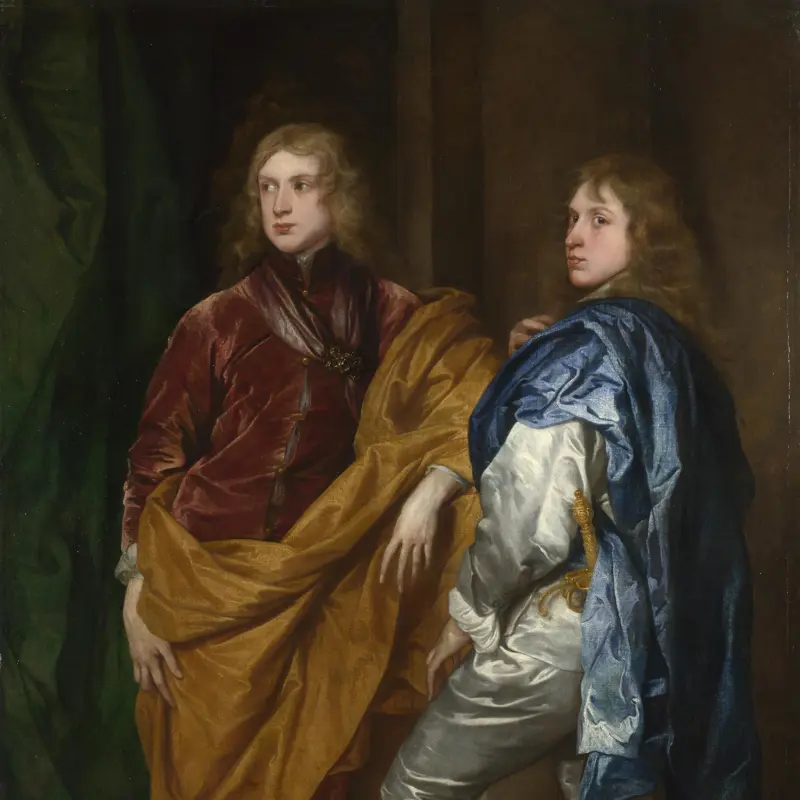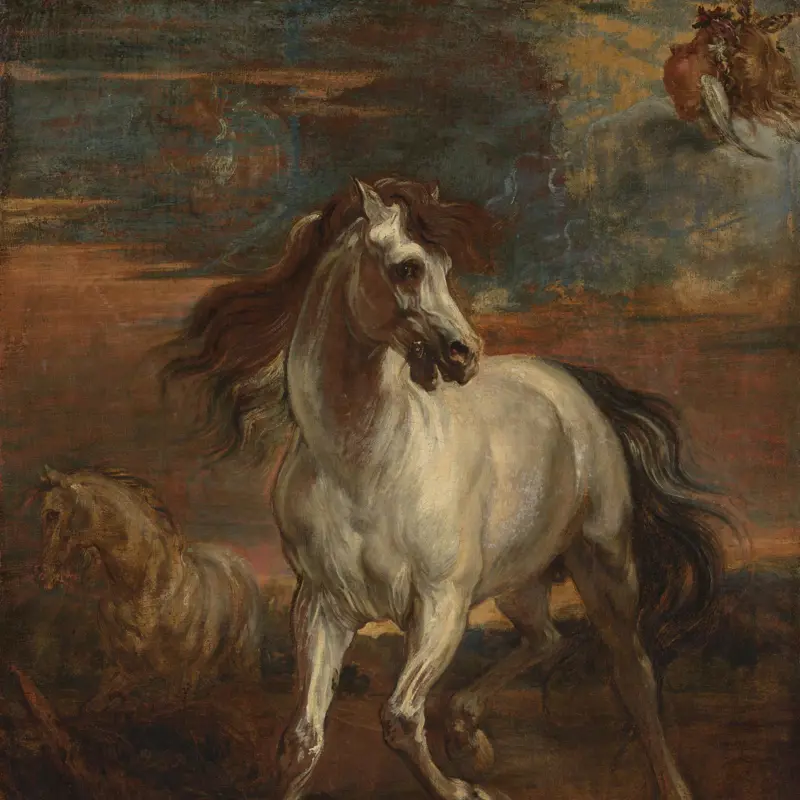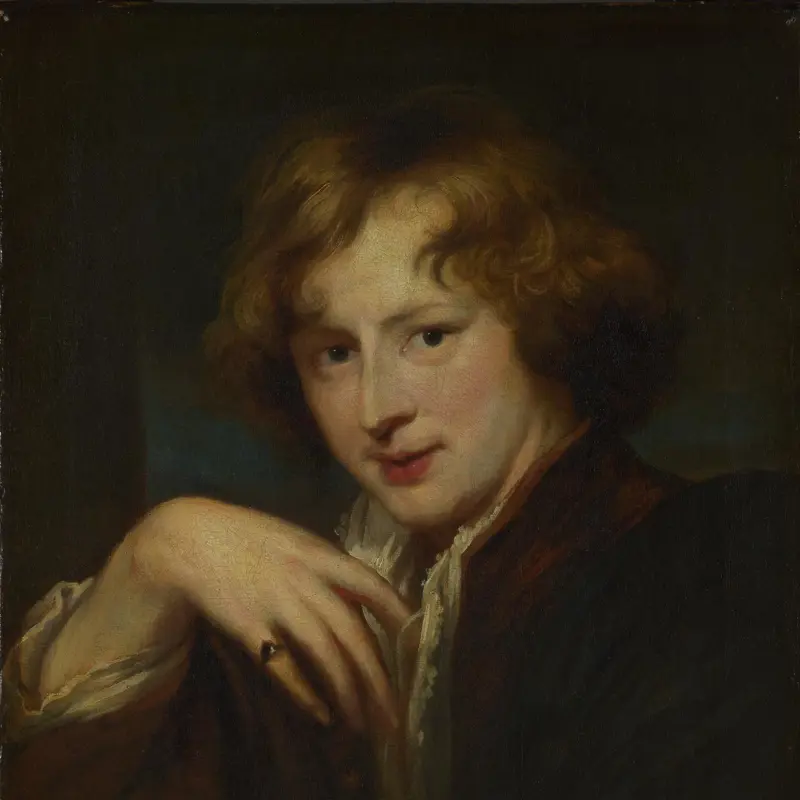Anthony van Dyck, 'Portrait of the Abbot Scaglia', 1634
About the work
Overview
The Abbot Scaglia (1592–1641), whose full name was Cesare Alessandro Scaglia di Verrua, was a cleric and diplomat well known in Rome, Madrid, London and Paris for his service to the House of Savoy and Philip IV of Spain. Scaglia was also an art collector of renown who knew, among others, Rubens, Van Dyck, Jordaens and Velázquez. After they met in the 1620s, Scaglia became one of Van Dyck’s most important patrons.
In this portrait, painted in Antwerp in 1634 when Scaglia was 42, Van Dyck shows him as a living statue, his pose and toga-like robes recalling Roman sculptures. Atop a body elongated to give elegance and life sits the head of a man who has seen much of life. He is a formidable figure used to moving in the highest echelons of court circles, whose expression, hard to read, nevertheless confirms Rubens’s estimation of him as ‘a man of the keenest intellect’.
Key facts
Details
- Full title
- Portrait of the Abbot Scaglia
- Artist
- Anthony van Dyck
- Artist dates
- 1599 - 1641
- Date made
- 1634
- Medium and support
- oil on canvas
- Dimensions
- 200.6 × 123.2 cm
- Acquisition credit
- Accepted by HM Government in lieu of Inheritance Tax and allocated to the National Gallery, 1999
- Inventory number
- NG6575
- Location
- Room 21
- Collection
- Main Collection
- Frame
- 21st-century Replica Frame
Provenance
Additional information
Text extracted from the National Gallery’s Annual Report, ‘The National Gallery Review: April 1999 – March 2000’.
Bibliography
-
1752G. Hoet, Catalogus of Naamlyst van Schilderyen met derzelver pryzen. Zedert een langen reeks van Jaaren zoo in Holland als op andere Plaatzen in het openbaar verkogt […], vol. 1, The Hague 1752
-
1770G. Hoet and P. Terwesten (eds), Catalogus of naamlyst van schilderyen, met derzelver prysen, zedert den 22. Augusti 1752 tot den 21. November 1768. Zo in Holland, als Braband en andere platzen in het openbaar verkogt. […], vol. 3, The Hague 1770
-
1815Catalogue of Pictures by Rubens, Rembrandt, Vandyke, and Other Artists of the Flemish and Dutch Schools: With Which the Proprietors Have Favoured the British Institution for the Gratification of the Public and for the Benefit of the Fine Arts in General, London 1815
-
1829
J. Smith, A Catalogue Raisonné of the Works of the Most Eminent Dutch, Flemish, and French Painters: In Which is Included a Short Biographical Notice of the Artists, with a Copious Description of Their Principal Pictures […], 9 vols, London 1829-1842
-
1839Catalogue of Pictures by Italian, Spanish, Flemish, Dutch and French Masters, With Which the Proprietors Have Favoured the Institution, June 1839, London 1839
-
1851Catalogue of Pictures by Italian, Spanish, Flemish, Dutch, French and English Masters, With Which the Proprietors Have Favoured the Institution, June 1851, London 1851
-
1854G.F. Waagen, Treasures of Art in Great Britain: Being and Account of the Chief Collections of Paintings, Drawings, Sculptures, Illuminated Mss. […], vol. 2, trans. E. Eastlake, London 1854
-
1862Catalogue of Pictures by Italian, Spanish, Flemish, Dutch, French and English Masters, With Which the Proprietors Have Favoured the Institution, June 1862, London 1862
-
1882J. Guiffrey, Antoine van Dyck: Sa vie et son oeuvre, Paris 1882
-
1887F. Stephens, Exhibition of the Works of Sir Anthony van Dyck, London 1887
-
1899Van Dijck tentoonstelling Antwerpen 1899: Ter gelegenheid der 300e verjaring der geboorte van den meester […], Antwerp 1899
-
1900Royal Academy of Arts, Exhibitions of Works by Van Dyck 1599-1641: Winter Exhibition, Thirty-First Year, MDCCC, London 1900
-
1900L.H. Cust, Anthony van Dyck: An Historical Study of his Life and Works, London 1900
-
1900M. Rooses, Fifty Masterpieces of Anthony van Dyck in Photogravure, trans. F. Knowles, London 1900
-
1909E. Schaeffer, Van Dyck: Des Meisters Gemälde, Stuttgart 1909
-
1922Loan Exhibition of Pictures by Old Masters on Behalf of Lord Haig's Appeal for Ex-Service Men, London 1922
-
1927A.F. Kendrick, T. Borenius and C. Dodgson, Catalogue of the Exhibition of Flemish and Belgian Art: Burlington House London 1927: A Memorial Volume, ed. M. Conway, London 1927
-
1927G.L. Holford and R.H. Benson, The Holford Collection, Dorchester House: With 200 Illustrations from the twelfth to the End of the Nineteenth Century, Oxford 1927
-
1928Christie, Manson & Woods, Final Portion of the Collection of Important Pictures by Old Masters. Chiefly of the Dutch, Flemish, French, Spanish and British Schools, the Property of the Late Sir George Lindsay Holford […], London, 17 May 1928 - 18 May 1928
-
1930Oud-Vlaamsche Kunst, Antwerp 1930
-
1930Wereldtentoonstelling voor koloniën, zeevaart en oud-vlaamsche kunst: Afdeeling der Oud-Vlaamsche kunst, Brussel 1930
-
1931G. Glück, Van Dyck, des Meisters Gemälde, Stuttgart 1931
-
1932M.A. Cornette, Trésor de l'art Flamand du Moyen Age au XVIIIme siècle: Mémorial de l'exposition d'art Flamend ancient à Anvers 1930, par un groupe de spécialiste, Paris 1932
-
1936C. Sterling, Rubens et son Temps, Paris 1936
-
1937D. Schlugleit, 'L'Abbé de Scaglia, Jordaens et "L'Histoire de Psyché" de Greenwich House (1639-1642)', Revue belge d'archéologie et d'histoire de l'art, VII, 1937, pp. 139-66
-
1938Catalogue of the Exhibition of 17th Century Art in Europe, London 1938
-
1949Van Dyck Tentoonstelling, Antwerp 1949
-
1953Flemish Art, 1300-1700: Winter Exhibition, 1953-4, London 1953-1954
-
1962F. Baudouin, Rubens Diplomate: Exposition organisée par le Service de recherches historiques et folkloriques de la province de Brabant avec la collaboration de la ville d'Anvers, 1er juillet - 15 septembre 1962 [...], Antwerp 1962
-
1973A. Monballieu, 'Cesare Allessandro Scaglia en de "Bewening van Christus" door A. van Dijck', Jaarboek van het Koninklijk Museum voor Schone Kunsten, Antwerpen, 1973, pp. 247-68
-
1974C. Brown, The Abbé Scaglia Adoring the Virgin and Child by Anthony van Dyck, London 1974
-
1975E. Larsen, La Vie, les ouvrages et les élèves de Van Dyck. Manuscrit inédit des Archives du Louvre. Par un auteur anonyme, Brussels 1975
-
1982O. Millar, Van Dyck in England, London 1982-1983
-
1982C. Brown, Van Dyck, Oxford 1982
-
1986Martin, Gregory, National Gallery Catalogues: The Flemish School, circa 1600 - circa 1900, London 1986
-
1987A.J. van Dissel, C.W. Fock and T.H. Lunsingh Scheurleer, Het Rapenburg; Geschiedenis van een Leidse gracht, vol. 2: De Paplepel, Leiden 1987
-
1988E. Larsen, The Paintings of Anthony van Dyck, Freren 1988
-
1990S.J. Barnes, A.K. Wheelock and J. Held, Anthony Van Dyck, New York 1990-1991
-
1991C. Brown, The Drawings of Anthony van Dyck, New York 1991
-
1992A. Cifani and F. Monetti, 'New light on the Abbé Scaglia and Van Dyck', Burlington Magazine, CXXXIV/1073, August 1992, pp. 506-14
-
1993E. Duverger, Antwerpse kunstinventarissen uit de zeventiende eeuw: 1654-1658, vol. 7, Brussels 1993
-
1999H. Vlieghe and C. Brown, Van Dyck 1599-1641, Antwerp and London 1999
-
2000National Gallery, The National Gallery Review: April 1999 - March 2000, London 2000
-
2000V. Manuth and M. De Winkel, '"Los Meninos" by Van Dyck?: New Identifications and Dates for the "Palatine Princes" in Vienna', Burlington Magazine, CXLII/1164, March 2000, pp. 147-56
-
2001
C. Baker and T. Henry, The National Gallery: Complete Illustrated Catalogue, London 2001
-
2001M. Strolz, 'Anton van Dyck – Carlo Emanuele d'Este, Marchese di Borgomanero(?)', Jahrbuch des Kunsthistorischen Museums Wien, II, 2001, pp. 251-62
-
2002T. Osborne, Dynasty and Diplomacy in the Court of Savoy: Political Culture and the Thirty Years War, Cambridge 2002
-
2004H. Vey et al., Van Dyck: A Complete Catalogue of the Paintings, New Haven 2004
-
2004E. Duverger, Documents concernant le commerce d'art de Francisco-Jacomo van den Berghe et Gillis van der Vennen de Gand avec la Hollande et la France pendant les premières décades du XVIIIe siêcle, Wetteren 2004
-
2007T. Osborne, 'Van Dyck, Alessandro Scaglia and Diplomacy in the Early Seventeenth Century', The Seventeenth Century, XXII/1, 2007, pp. 24-41
-
2008K. Jonckheere, The Auction of King William's Paintings, 1713: Elite International Art Trade at the End of the Dutch Golden, Amsterdam 2008
-
2013V. Herremans, Rubens Unveiled: Paintings from Lost Antwerp Churches, Antwerp 2013
-
2016S. Alsteens and A. Eaker, Van Dyck: The Anatomy of Portraiture, New Haven and London 2016
-
2016T. Osborne, 'Anthony van Dyck: A Painter-Diplomat of the Thirty Years' War?', in L. Duerloo and R. Malcolm Smuts (eds), The Age of Rubens: Diplomacy, Dynastic Politics and the Visual Arts in Early Seventeenth-Century Europe, Turnhout 2016, pp. 181-96
-
2017E. Buijsen, C. Wytema and K. Van der Stighelen, Zuiderburen: Portretten uit Vlaanderen 1400-1700, Zwolle 2017-2018
-
2018M.G. Bernardini and A.M. Bava, Van Dyck: Pittore di Corte, Rome 2018-2019
-
2019B. Maaz and M. Neumeister, Van Dyck: Gemälde von Anthonis van Dyck, Munich 2019-2020
-
2021C. White, Anthony van Dyck & the Art of Portraiture, London 2021
About this record
If you know more about this work or have spotted an error, please contact us. Please note that exhibition histories are listed from 2009 onwards. Bibliographies may not be complete; more comprehensive information is available in the National Gallery Library.


